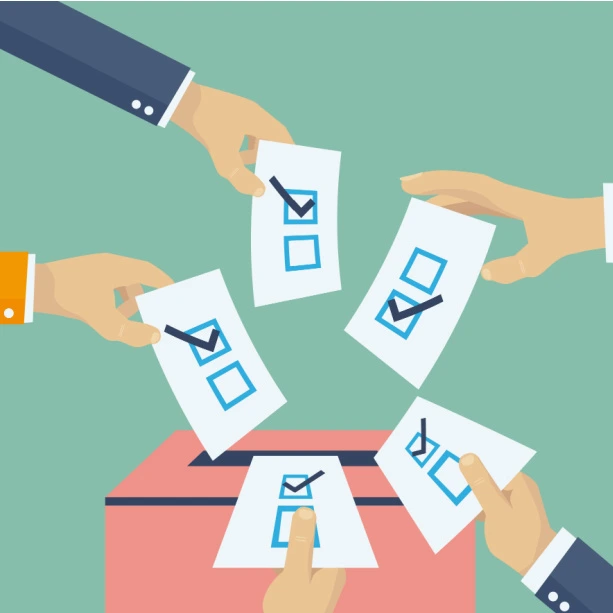Election season is stressful for everyone, but it will never be more stressful for anyone than it is for election officials. Election officials are responsible for managing the election process from start to finish and ensuring that they deliver a secure election that reflects the values of democracy. But with all the moving parts involved in managing an election, sometimes that’s easier said than done. Luckily, by employing asset tracking for elections, you can start enacting these three key steps to ensure the security and integrity of your election.
Increase Your ROI by Investing in AirFinder Everywhere
- Loss Prevention. Reduce the amount of loss that occurs during the supply chain process
- Location Coverage. AirFinder Everywhere uses a combination of GPS, Cellular, and WiFi to determine location everywhere
- Security Alerts. Know when a delay in shipment has occurred so the problem
can be addressed immediately.
1) Track Your Election Equipment
One of the first steps you can take to ensure election security is to track your election equipment. Often, election equipment for a number of townships or other areas are all stored in one central location. More often than not, that location isn’t a polling place itself. It could be the basement of the county’s office building, a designated storage room in a community center, or even a warehouse in the case of larger regions with more devices. This means that for most of the year, the equipment isn’t kept at the polling location; this also means that when election season rolls around, that equipment must be transported from the storage location to the designated polling place.
Making sure that the right equipment is delivered to the right polling location is absolutely critical for a secure election process. Most election equipment is not interchangeable between polling locations; they contain information or are of particular models that are used by a specific location. If the wrong equipment is at the wrong location, election officials will not be able to use the device to verify voter registration and identification. Instead, they will have to enact a far more tedious and fallible process of taking down voter information manually for each citizen who arrives to vote at that location. Granted, they are trained to do so properly, but it does make election day far longer and far more difficult. The goal of election officials is to deliver a calm, efficient, and streamlined voting experience; anything that increases stress or tension in the attending voters threatens security in that location.
The best way to track your election equipment to this end is to invest in IT equipment tracking for your critical equipment. With this strategy, you can place location tracking tags on critical equipment and assign them with designated names that reflect their intended polling locations. Using the provided platform, you can see the journey of the equipment mapped out from the storage location to the polling place. You can also quickly see if a particular device seems to be heading to the wrong destination and take measures to rectify the issue before it’s too late. You can also set up geofences around the designated polling locations so that you can receive alerts when equipment enters that zone, allowing elections officials to take inventory of their equipment with increased efficiency for an overall smoother election process.
2) Monitor Your Dropboxes
Another step you can take to ensure election security is to monitor your external dropboxes, where relevant. In some areas, dropboxes provide a method for remote voting, extending the ability to act on voting rights to those who may not be able to go to a polling place on election day. These dropboxes are monitored by teams of election officials throughout the voting period. At the end of that period, those teams then retrieve the box and its contents to take the votes to be counted. The process and regulations surrounding it are similar to the delivery of voting data from standard polling locations, with careful records kept of who is monitoring or otherwise in contact with the dropbox and ballots at any given time.
That being said, dropboxes and their contents are prone to tampering in a way that traditional polling locations are not. This is partially due to the fact that unlike standard polling locations, these boxes are located in environments that cannot be as carefully controlled by election officials. Certainly, those officials can remain with the dropbox and monitor drop offs to ensure that each ballot is properly received, but they don’t have as much control over who enters that space and how long they linger there. Part of the design of the polling process at standard locations is to keep people moving so that they arrive, provide identification, cast their ballot, and leave. The process is streamlined in a way that does not encourage or allow people to linger or otherwise congregate. Dropboxes require far more monitoring because they are out in the open, in an environment that cannot be fully controlled.
In addition to being used to track equipment, an asset tracking solution can also be applied to provide increased security to ballot dropboxes and their contents. By placing a location tracking tag on our inside the box, election officials can receive alerts if the dropbox is moved without authorization. This information will not only help them act quickly, but also to potentially take legal action against the responsible parties. These systems can also provide safety measures against tampering. By utilizing a tag with a tampering sensor, election officials can receive alerts if someone is trying to open or otherwise tamper with the ballot box. This provides them increased control over the collection area so that voters can submit their ballots reliably and in peace.
3) Reinforce Your Chain of Custody
Perhaps the most important and most influential measure you can take in order to ensure election security is to reinforce your chain of custody data. Chain of custody is a very important element of delivering a secure election. It’s very closely maintained before, during, and after the election to reflect where critical election assets are, when they were there, and who was in possession of them at any given time. There are strict processes for recording and maintaining this information that are absolutely critical for counties and other government agencies to prove that they delivered a fair, well-maintained election. These records also come up in cases where someone takes the county to court over election practices. The importance of maintaining detailed and accurate chain of custody information cannot be overstated.
There are multiple election assets that require chain of custody tracking, but the most prominent ones are the jump drives and ballot bags that are used to deliver actual votes to be counted. These assets are only at the polling place for a set period of time. Prior than that, an election official is responsible for retrieving them from wherever they were stored and delivering them to the polling place. After the active election period is over, the jump drives and ballot bags must then be transported to wherever that region’s votes are being counted. At every stage before, after, and during the election, chain of custody dictates that there must be a record for who is handling and who is responsible for these critical assets. After the election is especially strict, as officials are no longer just transporting important assets, but also critical data. These records are maintained stringently to provide transparency and promote the integrity of the people conducting the election management process.
An equipment tracker cannot be used to complete chain of custody documentation for you, as this process is legally dictated and not decided upon by election officials. However, using an asset tracking system can help you backup your chain of custody records if you’re ever taken to court over election results. Usually, in cases like these, chain of custody records are carefully reviewed for any anomalies based on what the records and the officials can and cannot prove. Since this can take awhile, this means that counties are subjected to the legal fees involved with dealing with the court case, not to mention how it affects other initiatives they’re responsible for. By placing a tag with or in jump drives and ballot bags, this process is expedited because counties and other government agencies will have location data on record that backs up the standard chain of custody reports. This means more dropped cases, less time in court, less legal fees, and a more secure election.
How Link Labs Helps Counties Ensure Election Integrity
Link Labs works with counties to help them deliver secure elections through various applications of our AirFinder Everywhere asset tracking technology. These counties use our system and our tags to help track their equipment, monitor their dropboxes, and reinforce their chain of custody, with one county reporting that the solution paid for itself within months with the amount of legal fees it helped them avoid. Our AirFinder Everywhere solution has the benefit of supporting all of these use cases on the same central system, which means you don’t have to decide which initiative to prioritize. And you only pay for the tags and infrastructure that you want and need, with options to add more tags to track more assets if you decide you want to later. To learn more about how Link Labs can help ensure election integrity through strategic location tracking, book a demo with our experts today!





